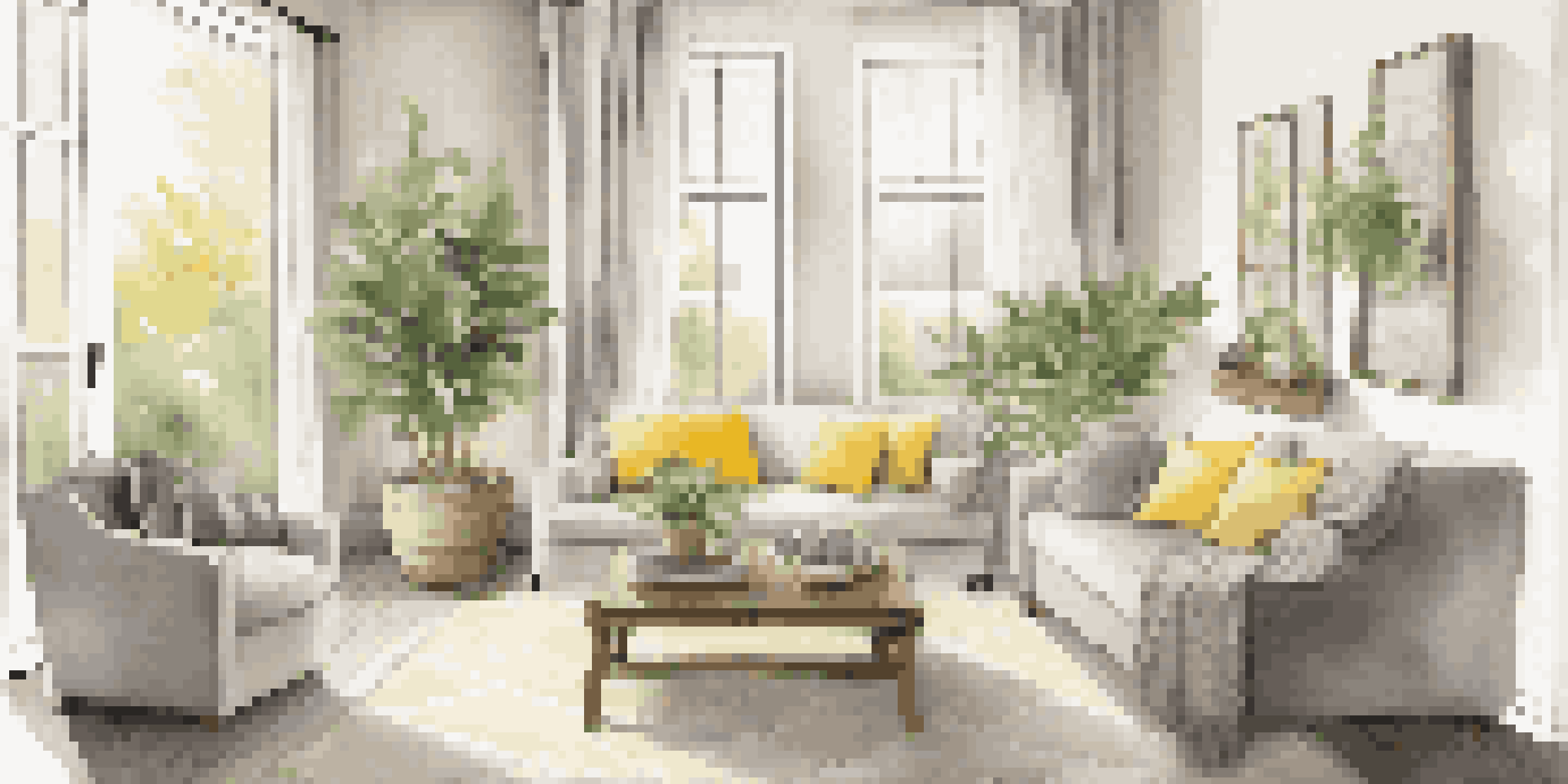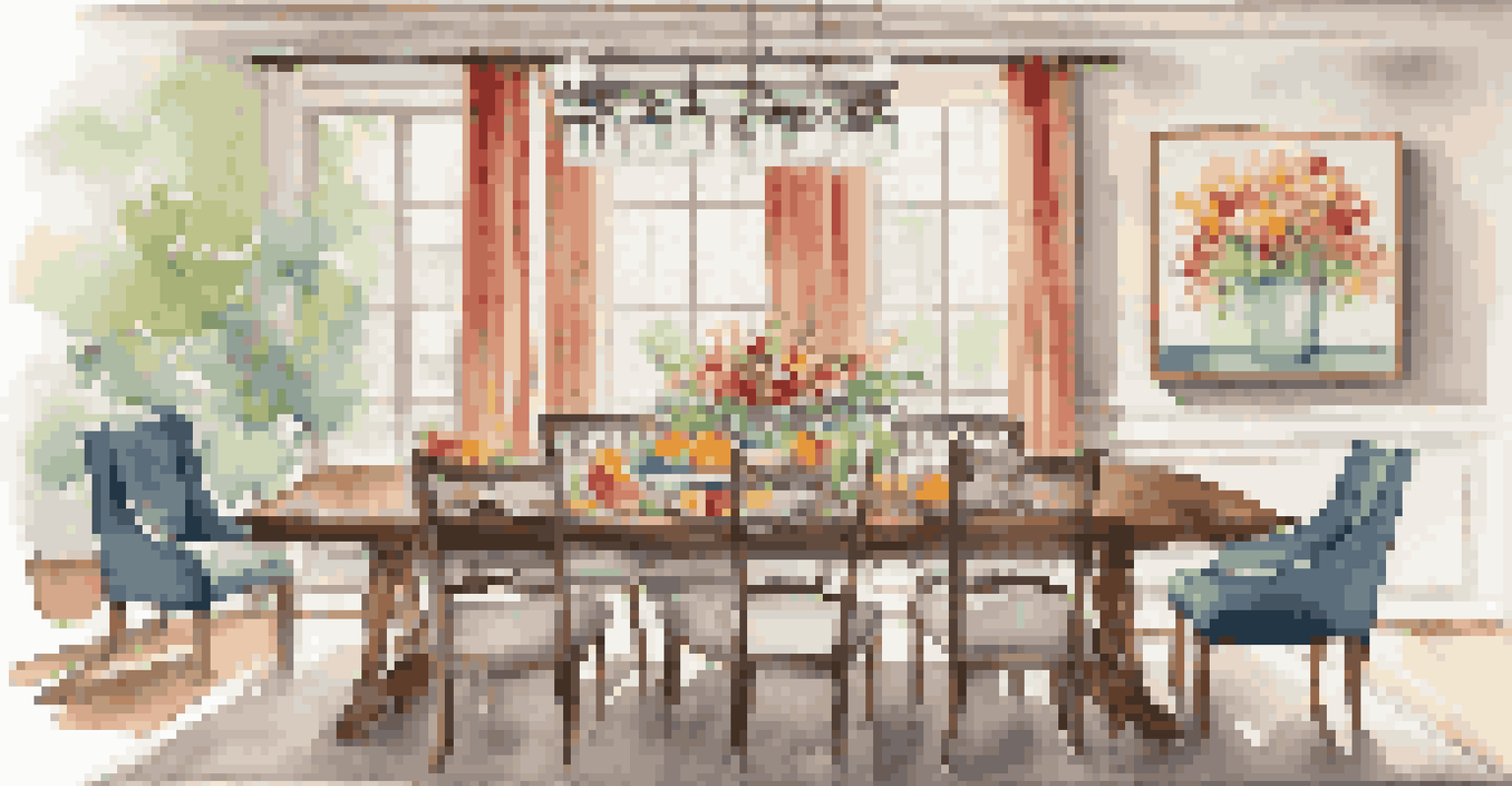Timeless Design for Family Spaces: Comfort and Style

Understanding Timeless Design in Family Spaces
Timeless design refers to styles that remain appealing regardless of trends. It prioritizes functionality while maintaining aesthetic appeal, making it a perfect choice for family spaces. By focusing on classic elements and quality materials, you can create an environment that nurtures both comfort and style.
Design is not just what it looks like and feels like. Design is how it works.
In family spaces, timeless design allows for flexibility. As family needs evolve, these designs adapt without losing their charm. For example, a well-placed sofa or a solid wood dining table can transition from playdates to dinner parties seamlessly.
Ultimately, timeless design fosters a sense of belonging and warmth. It encourages families to gather and create lasting memories, making your home not just a place to live, but a hub of connection.
Choosing the Right Color Palette for Comfort
Color plays a crucial role in defining the atmosphere of a family space. Soft, neutral tones like beige, soft gray, or warm white can create a calming backdrop that feels cozy and inviting. These colors offer versatility, allowing you to easily switch up decor or accent pieces as your family's style evolves.

Consider adding pops of color through accessories like cushions, art, or rugs. This approach allows for playful expression without overwhelming the space. For instance, a bright yellow throw pillow can energize a neutral sofa, creating a welcoming vibe.
Timeless Design Enhances Family Spaces
Timeless design combines functionality and style, creating a comfortable environment that evolves with family needs.
Remember, the right color palette not only enhances the visual appeal but also influences mood. A well-thought-out color scheme can promote relaxation, creativity, or even stimulate conversation, making your family space truly special.
Selecting Furniture That Balances Style and Function
When choosing furniture for family spaces, it's essential to strike a balance between style and function. Opt for pieces that are not only visually appealing but also durable and easy to maintain. For instance, a leather sofa might look chic, but it’s also practical for families with kids or pets.
The best rooms have something to say about the people who live in them.
Multi-functional furniture can be a game-changer. Coffee tables with storage, ottomans that double as seating, or extendable dining tables can maximize space and utility. This flexibility allows your family to adapt the space to various activities, from game nights to family meals.
Investing in quality furniture pays off in the long run. While trendy pieces might be tempting, classic designs tend to endure shifts in style and wear, ensuring your investment continues to serve your family well for years to come.
Incorporating Natural Elements for a Warm Touch
Bringing natural elements into your family space can enhance its comfort and appeal. Wood, stone, and plants introduce warmth, texture, and a sense of tranquility. For example, a reclaimed wood coffee table can serve as a stunning focal point while grounding the room in nature.
Incorporating plants not only brightens up the space but also improves air quality and boosts mood. Low-maintenance options like succulents or snake plants are perfect for busy families. They add a refreshing touch without demanding too much attention.
Color Affects Mood and Atmosphere
Choosing a thoughtful color palette can promote relaxation and creativity, enhancing the overall feel of family spaces.
Natural elements foster a connection to the outdoors, creating a soothing environment. This connection can be especially valuable in family spaces, where relaxation and togetherness are paramount.
Personalizing Spaces with Family Memories
Personal touches make a house a home, especially in family spaces. Incorporating family photos, artwork, or mementos can evoke cherished memories and create a sense of belonging. A gallery wall with framed pictures of family vacations can be a great conversation starter.
Consider displaying children's artwork or crafts in creative ways. This not only showcases their creativity but also gives them a sense of pride in contributing to the home’s decor. It’s a simple way to make the space feel more personalized and loved.
Remember, personalizing your space doesn't mean cluttering it. Choose a few meaningful pieces to highlight, ensuring the area remains organized and inviting, while still reflecting your family's unique story.
Creating Flexible Spaces for Family Activities
A family space should be adaptable to various activities, from quiet reading nooks to lively game areas. Consider the layout and furniture arrangement to allow for easy transitions between different uses. For instance, a cozy corner with a few bean bags can quickly transform into a fun play area.
Use rugs to define different zones within a space. A large area rug can anchor a living room, while smaller rugs can delineate play areas or reading corners. This not only enhances functionality but also adds visual interest.
Flexible Layouts Foster Family Activities
Designing adaptable spaces allows families to enjoy various activities together, ensuring everyone feels included and engaged.
Flexibility is key in accommodating family members of all ages. By designing spaces that serve multiple purposes, you ensure everyone can enjoy a functional and engaging environment, no matter the activity.
Lighting: Enhancing Mood and Functionality
Lighting plays a pivotal role in setting the mood of any family space. Natural light is the most desirable, so maximize windows or use sheer curtains to allow sunshine to flood the room. A well-lit space feels more inviting and encourages interaction among family members.
Incorporate a mix of ambient, task, and accent lighting. For example, overhead fixtures provide general lighting, while table lamps or floor lamps can help create cozy reading spots. Dimmable lights can also help set the mood for different occasions.

Remember, the right lighting not only enhances aesthetics but also affects functionality. Properly illuminated spaces make it easier to complete tasks and enjoy family activities, ensuring your home remains a hub of comfort and joy.